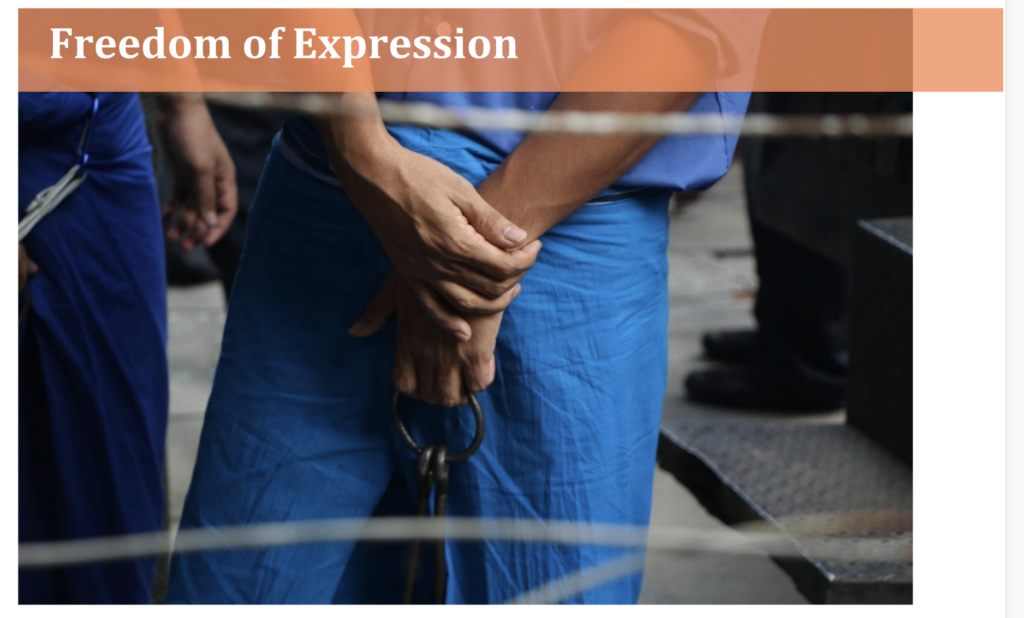
Analysis of Freedom of Expression in Four Years Under the Current Government
1.1 Background
Myanmar has stayed in the nightmare of freedom of expression since 1962. It is widely said that the 1947 Constitution could guarantee the right to freedom of expression and opinion after independence. Burma was ranked at the top places among Asia countries in terms of media freedom in 1950. However, human rights including the right to freedom of expression were dashed under the one-party authoritarian system led by the Burma Socialist Programme Party (BSPP) that was formed under the regime led by General Ne Win after a coup detat in 1962. The repressive one-party system, loss of fundamental human rights, economic crisis and worsened socioeconomic status resulted in 8888 nationwide democracy revolution with a mass mobilization across the country. The 1990 multi-party general election was held after the revolutionary uprising, however, the entire country was ruled again by the dictatorship of the Tatmadaw (Myanmar Army) that still preserved, not to hand over the power to the winning party. The military regime established the State Peace and Development Council (SPDC) to rule the country with tyrannical system, leading it to the absolute loss of free speech.
The 2010 general election followed the adoption of the 2008 Constitution drafted by the military dictatorship. The Union Solidarity and Development Party (USDP), a political vehicle of former military generals, won in the election and the political system of the country started transitioning from military dictatorship to quasi-democracy. Even though Section 354 guarantees the right to freedom of expression, publishing and distribution and Section 354 guarantees the freedom of art, the 2008 Constitution states restrictions must be established, in a phrase “if (the expression and assembly) are not contrary to the existing laws”. Hence, it only seems that the 2008 Constitution respects and fulfills the right to freedom of expression in euphoria but impedes the freedom of expression in practice.
The constitution lacks of provisions protecting media freedom and freedom of information too. Free speech is limited, not even protected by the constitution, a pivotal stem of a legal system of the country.
The situation apparently improved a little under the previous government led by the U Thein Sein compared to its predecessor NaAhPha military dictatorship (State Peace and Development Council) led by U Than Shwe because direct censorship of private media agencies was abolished, ban on Thangyat performance was lifted and peaceful protests were regulated through a legislation. More expectations for human rights and freedom of expression emerged after the National League for Democracy (NLD) led by Daw Aung San Suu Kyi won with landslide victory in the 2015 general election. This report includes the findings on freedom of expression violations within four years from April 1, 2016 to March 31, 2020 under the NLD-led new government.
Download PDF English | Myanmar
